Influence of Ethnic Minorities in the Cosmetics Industry
Info: 8478 words (34 pages) Dissertation
Published: 27th Oct 2021
Tagged: BusinessConsumer Decisions
To what extent consumer behavior are influenced by ethnic minorities in the cosmetics industry? A case analysis of L’Oréal in US
Abstract
Studies on consumer behaviour highlighted the influence that ethnicity had. In an environment that tends to be more and more multicultural; the purpose of this paper was to conceptualize a pattern of ethnic consumption in order to answer the question of research: To what extent, consumer behaviour is influenced by ethnic minorities in the cosmetics industry in the United States?
The current research is based on a case study on the international cosmetics brand L’Oréal.
A depth of the analysis of the comments underlines that there is no influence on the Conscience brand, except for new products under review. The results revealed significant differences in the impact on consumer behavior between sponsored and non-sponsored reviews. The research concluded that ethnicity is a major determinant of the effect of purchasing behavior on the consumer and on the decision-making process.
Contents
1.0. Introduction
1.1. Background
1.2. Research aims/objectives/question
2.0. Literature review
2.2. Minorities in Marketing: The Ethno- marketing’s concept
2.3. The Globalization of culture
2.4. Customer behaviour and consumer decision making
2.5. The cosmetics industry in the multiculturalism US market
2.6. Conceptual framework
3.0. Methodology
3.1. Introduction
3.2. Research philosophy
3.3. Research approach
3.4. Research strategy
3.5. Sample
3.6. Ethics
3.7. Research design
3.8. Data collection
3.9. Summary
4.0. Data & Analysis
4.1. Review of Ethnic Minority Consumer Behaviour Research
4.2. Market Size and Main Product Trends – United States
4.3. L’Oréal: A success story
Conclusion, limitations and recommendations
5.1. Conclusion
5.2. Recommendation
References
Appendices
1.0. Introduction
1.1. Background
Although there is a growth in the world market homogeneity, there is a particular attraction to ethnicity, which is a growing motivation in the contemporary market (Costa and Bamossy, 1995, Hult and Keillor, 1994). Cornwell and Drennan (2004:108) point out that consumer behaviour is influenced “by the interaction and overlap of globalization and Forces of fragmentation, by which globalization fuels fragmentation. Culture is a main determinant of consumer behaviour (McCracken. 1986), and cultural values play a leading role in this scheme of influence (Kamakura and Novak. 1992; Luna and Gupta. 2001). It is essential for companies in the cosmetics industry to take into account the value system of ethnic consumer groups in order to study the impact on their consumer behaviour as this will result in a more effective deployment of marketing strategies (Schwartz and Bilks. 1987). The concepts of cultural and social identity, the ability to help explain consumer behaviour in the cosmetics market (Howard. 2000; Sussman. 2000). In a multicultural country, which is the US, most cross-cultural marketing studies consider ethnic minorities to influence the way brands will engage with consumers in the market (Bouchet 1995, Peñaloza and Gilly 1999). A more productive perspective would be to consider the dialectical relationship that the market allows between ethnic consumers and marketing specialists (Peñaloza and Gilly, 1999). In this perspective, Peñaloza and Gilly (1999) use the theory of acculturation to show how, in a multicultural market, such as the United States, through different cultures, market learning by Marketing, allows them to focus their offers on the demand of minorities in the country. It therefore, seemed wise to question the place of ethnic groups in purchasing behavior as consumers of cosmetic products and to what extent they influence the cosmetics industry in the United States. In recent years, there has been a growing complexity in the behavior of individuals to which marketing has had to adapt. In all countries of the world, many people today choose to identify themselves symbolically with ethnic inheritances and consumers have a growing tendency to seek out and claim their roots or differences. In this thesis, the author focuses on the United States for her study of analysis. Consumers are often tired of having to look at advertisements, whose products are of little interest to them. More and more of them want to campaign directly to them, refusing to be considered as a uniform mass market with identical needs. In this writing, the author examines the cosmetics industry.
1.2. Research aims and objectives
The purpose of this project is to provide an analysis of the Consumer behaviour that represent Minorities and the impact this creates on the Cosmetics Industry.
To achieve the aim of this project, the following key objectives have been identified as:
- Why Cosmetics Brands target ethnic groups as an attractive market?
- Are ethnic groups’ big customers in cosmetics industry in US?
- How cultural awareness should drives customer’s behaviour choices?
- What do the Cosmetics Brands do to capt attention to their ethnic products?
This chapter of the literature review chapter contrasts different academics views on influence by ethnic groups on customer behaviour in the US cosmetics industry whilst highlighting any gaps in the literature which can be investigated further or add knowledge to existing theory (Brown 2006).
2.0. Literature review
This chapter of the literature review chapter contrasts different academics views on influence by ethnic groups on customer behaviour in the US cosmetics industry whilst highlighting any gaps in the literature which can be investigated further or add knowledge to existing theory (Brown 2006).
2.2. Minorities in Marketing: The Ethno- marketing’s concept
2.2.1. Minorities and ethnic groups
According to Jamal (2003), ethnic origin represents genetics obtained from generation to generation and will impact on identification. As listed in the areas of anthropology and sociology, ethnicity is used to place people in different categories according to their differences in nature or disposition (Laroche and al. 1991). Ethnic groups are distinguished by their unique identity (Hirschman, 1981). People who share the same culture are supposed to be in the same ethnic group; while those with a different culture are different members of different ethnic groups (Mokhlis. 2009). Minority ethnic groups are members of ethnic minorities, id est individuals who share an ethnic origin distinct from that of the dominant population (Pires and Stanton. 2002). Ethics is associated with “what is good” (Seeley and Wasilewski, 1996). At the level of consumer behavior, “what is good” perhaps could be interpreted as “what acceptable behavior” To this extent, the argument of Segal and Giacobbe (1995) argues the facts that culture can play an important role in the definition of ethical standards is justified; indeed different countries with different cultures socialize dissimilar people according to their perception of acceptable behavior. For example, if we want to understand Japanese ethics, we must find the foundations in aesthetics transmitted by social beauty or social harmony (Seeley and Wasilewski. 1996: 165). Based on a literature review, Segal and Giacobbe (1995) found pre-sufficient evidence that ethical diversity is linked to cultural diversity and consumer choices.
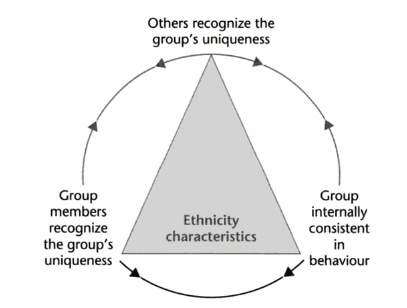
Figure 1 Ethnicity-defining characteristics
The figure 1 represent the three defining characteristics that illustrate the mutual reinforcement between people of the same group.
2.2.2. The concept of ethnic marketing
According to Senges. (2010), the term ethnic marketing is defined as:
an approach that takes into account the existence of a parallel market to the general public by a market communities. Society is perceived as an aggregate of communities that are distinguished by their modes of consumption lifestyles languages ways of dressing and leisure.
Similarly, as Filser (1992) argues, the concept of ethnic marketing refers to the influence of cultural factors and its variability; it is then a question of differentiating:
- Macro-cultural effects that describe the characteristics of an entire population (for example, that of a country)
- Micro-cultural effects – which will characterize a subgroup in the same population (in this case, for example, ethnic group).
The term Ethnic marketing appeared in the early 1900s in the United States, a country whose population grew progressively due to successive waves of immigration. The importance of ethnic groups in the American population explains why this variable was considered early enough by firms to segment their markets, giving rise to a large body of research. If ethnicity can be defined as “everything that fosters a sense of identity, belonging, and the resulting expressions” (De Lassus and Becheur, 2009), ethnic marketing or ethno-marketing, for its part, is the “approach to segmenting the local or international market by relying on the homogeneity of an ethnic strain of a group of consumers”. In this way, Badot and Cova. (1995) propose that products are adapted to the physical and cultural characteristics of consumers aggregated by ethnic groups, such as black, Hispanic, Jewish, Islamic, etc., will be proposed.
Ethnic marketing draws its relevance from several observations:
- Different waves due to immigration, which have gradually built a multicultural population of people whose expectations and needs may vary according to their ethnic origin (hair care, food, clothing, etc.).
- The recent emergence of new behaviors among individuals who seek, through the consumption of certain products, to assert their identity and even to claim their ethnic heritage, is also an inspiration for marketing practice.
It is then a question for companies to respond to this demand for specific needs (Benabdallah and Jolibert. 2013).
2.2.3. Ethnic Marketing strategies
According to the American Marketing Association (AMA) the term marketing designs the is the function that links the consumer, customer, and public to the marketer through information, information are used to define and identify marketing opportunities and problems; generate, refine, and evaluate marketing actions; monitor marketing performance; and improve understanding of marketing as a process. Marketing research specifies the information required to address these issues, designs the method for collecting information, manages and implements the data collection process, analyzes the results, and communicates the findings and their implications (available from
2.2.4. A Growing offer of ethnic products
Ethnic groups are made up of agglomerations of ethnic consumers. Such groups must be identifiable, accessible, measurable and stable in order to have products that correspond to their expectations. Identifying attitudes and behaviours and understanding the consumer in order to respond to new expectations in the best way today represents a major challenge for companies; Which face an ever-changing environment and hyper competition. The study by Lee, Tharp and La Ferle (1999) argues that consumers in diverse communities (Anglo-American, African-American, Asian, Hispanic) prefer offers tailored to their community. These offerings are aimed at responding to the demands of ethnic populations and the entry of such products is perceived as a recognition of cultural specificities (Özçağlar-Toulouse and Hadj Hmida, 2009).
The Globalization of culture
Ethnicity is expected to disappear as a social force in the 20th century, ending its social and political importance and consequently its economic relevance (Cornell and Hartmann, 1998, Hutchinson and Smith, 1996; Bentley. 1981). Instead, the global process by which industrialization, urbanization, and mass communications transformed society, revived identity building and ethnicity (Cornell and Hartmann. 1998; Castles and al. 1992). This supports the need to take cultural differences into account when marketing across countries, while recognizing the need for marketing programs tailored to minority ethnic groups in culturally diverse societies. The globalization of demand implies uniformity among cultures, but what seems to happen in reality is the reinforcement of cultural differentiation between countries through ethnicity. Although this idea would certainly merit further investigation, its coherence can be translated and supported so that the presence of ethnic minority groups in the national border of advanced economies such as the United States is unanimous. The country is regularly mentioned as a model of a multicultural and pluralistic society; these adjectives describe the cultural diversity of the country well (Cornell and Hartmann. 1998, Hutchinson and Smith. 1996 and Bentley. 1981). Awareness of the importance of the potential of minority ethnic groups for marketing can be traced back to Andreasen. (1975). This is due to the fact that culture and ethnicity are causal constructions relevant to both the seller-buyer and consumer behaviour (Hui and al. 1992), which determines that each ethnic minority group is potentially unique. Probably, the latter is part of the field of “multicultural marketing”, a term often used indifferently with “ethnic marketing” (Nwanko and al. 1998 : 44), adopted in this research. Cui (1998 : 87-88) describes ethnic marketing as “treating ethnic consumers as distinct markets distinct from the macro market and achieving them through differentiated marketing strategies” or, more succinctly, “differentiated marketing towards Ethnic group “. Everywhere there is an ample and regular movement that progressively shifts year after year the perspective of researchers and managers from the questions of “decision making and purchasing behaviors” to those of the “why of consumption” (Ratneshwar, Mick and Huffman.2000).
Customer behaviour and consumer decision making
Customer behaviour
There are several definitions of consumer behavior; according to (Solomon, Bamossy and al. 2006: 6):
Consumer behaviour…… is the study of the processes involved when
individuals or groups select, purchase, use or dispose of products, services, ideas or experiences to satisfy needs and desires.
Schiffman and Kanuk (2007 :3) take a similar approach in defining consumer behaviour:
the behaviour that consumers display in searching for, purchasing, using, evaluating, and disposing of products and services that they expect will satisfy their needs.
Consumer behaviour as a study is a broad field. Generally, it is “the process involved when individuals or groups choose, purchase, use or dispose of products, services, ideas or experiences to satisfy needs and desires” (Solomon. 2015: 28). Although, it first referred to purchasing behaviour because it was focused solely on the interaction between the consumer and the producer at the point of sale, it is now recognized as a continuous process (Solomon. 2015). This process is affected by several factors such as age, gender, social class, ethnicity, geographical location and culture. As it seeks to satisfy a need or desire, the universally acknowledged needs that affect consumer behaviour are: the need for affiliation, the need for power and the need for uniqueness (Solomon. 2015).
Customer decision making
Consumer decision making has long been of interest to researchers. Beginning about 300 years ago early economists, led by Nicholas Bernoulli, John von Neumann and Oskar Morgenstern, started to examine the basis of consumer decision making (Richarme. 2007). This early work approached the topic from an economic perspective, The most prevalent model from this perspective is ‘Utility Theory’ which proposes that consumers make choices based on the expected outcomes of their decisions. Consumers are viewed as rational decision makers (Schiffman and Kanuk. 2007, Zinkhan. 1992). Contemporary research on Consumer Behaviour considers a wide range of factors influencing the consumer, and acknowledges a broad range of consumption activities beyond purchasing. These activities commonly include; need recognition,
Information search, evaluation of alternatives, the building of purchase intention, the act of purchasing, consumption and finally disposal. It is only since the 1950s that the concept of consumer behavior responded to the design and growth of marketing that has an impact on consumer decision-making (Blackwell, Miniard and al. 2001). Based on the cultural distance between home subcultures and host culture, companies could adapt their offerings to consumers of different ethnicities (Benabdallah and Jolibert. 2013). Consumers with a strong ethnic identity have a greater tendency to react to the packaging of the product displaying their language of communication (Run and Chin. 2006). It appears that consumers see and interpret brands or advertisements according to their ethnic affiliations and orientations (Run. 2005). The purchase intention gains some momentum because of its positive impact on the influence on the actual behavior of the purchase (Ghalandari and Norouzi. 2012; Tsiotsou. 2006). Purchasing intentions are what consumers think (Lin and Chen, 2006) and their willingness to buy (Dodds and al. 1991, Jarvenpaa and al. 2000). The literature has also shown that perceptions of individual countries influence purchase intentions (Wang and Yang. 2008, Lampert and Jaffe. 1998). It is suggested that the positive perception towards a product, runs when the consumer believes in the quality of the products and feels represented by the brand (Chen. 2009). This may be due to consumer participation (Prendergast and al. 2010). Communication via electronic tools like social networks also plays a key role in the decision-making process of ethnic minority consumers. Silverman (2011: 34) says that the primary role of the electronic mouth is to shorten the price decision cycle because “customers want … the best product they can get with the simplest decision-making process.” Consumers will collect information about products that are directly likely interest to. Lee et al (2008), suggests that word-of-mouth between ethnic consumers is important during behaviour decision’s phase, and he adds that research information is relevant in the study of customer by cosmetics brands, this database provides to the cosmetics companies operational information about perspectives of the consumer.
The cosmetics industry in the multiculturalism US market
2.3.1. Product life cycle
Life cycle of all products in the cosmetics industry vary, some products have a long life cycles and some only stay in the market for a short period time (Sameer and al. 2006). The higher the competition, the lower the life cycle of the products. Consumers will play a key role in the product lifecycle, as the competition grows, the life cycle of the products. Consumer demand is changing as their needs evolve, cosmetics companies must anticipate demand, replace existing ones and innovate with new products that meet the demands of ethnic consumers (Akers and Porter, 1995).
Conceptual framework
In view of the rapid globalization of consumption, it is not surprising that many empirical research efforts have been devoted to studying the role of ethnicity in the purchasing process of consumer’s minorities. The current chapter reviews first the literature dealing with the effects of minority effects on new marketing concepts, ethno-marketing, focusing on ethnic minorities in the United States as a consumer in the cosmetics industry, and the susceptibility to influence on their consumer behaviour on the cosmetics industry.
Minorities in marketing: the ethno-marketing’s concept
As Jamal (2003) said, ethnic origin represents genetics obtained from generation to generation and will impact on identification. Values are one of the foundations of culture. Its form the beliefs and attitudes of the individual behaviours of different ethnic groups (Hofstede, 2001).Minorities as consumers link with attitude-willingness to buy, (figure 1).
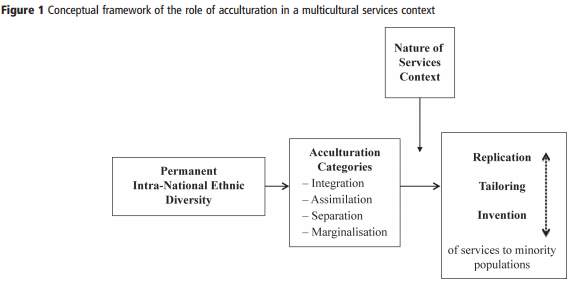
Figure 2: Conceptual framework for the study- (source: http://search.proquest.com/docview/1449409538/fulltextPDF/672F10BD2D1E4899PQ/3?accountid=10286)
The globalization of culture
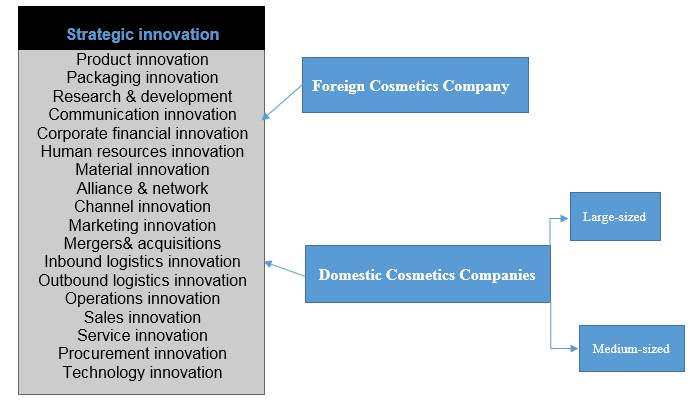
Figure 3: conceptual framework of strategic innovation in the cosmetics industry (creates by the author)
This is due to the fact that culture and ethnicity are causal constructions relevant to both the seller-buyer and consumer behaviour (Hui and al. 1992), which determines that each ethnic minority group is potentially unique. Probably, the latter is part of the field of “multicultural marketing”, a term often used indifferently with “ethnic marketing” (Nwanko and al. 1998 : 44), adopted in this research. Cui (1998 : 87-88) describes ethnic marketing as “treating ethnic consumers as distinct markets distinct from the macro market and achieving them through differentiated marketing strategies” or, more succinctly, “differentiated marketing towards Ethnic group “.
Customer behaviour and consumer decision making
Consumer behaviour as a study is a broad field. Generally, it is “the process involved when individuals or groups choose, purchase, use or dispose of products, services, ideas or experiences to satisfy needs and desires”
(Solomon. 2015: 28). Although, it first referred to purchasing behaviour because it was focused solely on the interaction between the consumer and the producer at the point of sale, it is now recognized as a continuous process (Solomon. 2015). This process is affected by several factors such as age, gender, social class, ethnicity, geographical location and culture. As it seeks to satisfy a need or desire, the universally acknowledged needs that affect consumer behaviour are: the need for affiliation, the need for power and the need for uniqueness (Solomon. 2015).
The cosmetics industry in the multiculturalism US market
Consumers are viewed as rational decision makers (Schiffman and Kanuk. 2007, Zinkhan. 1992). It is suggested that the positive perception towards a product, runs when the consumer believes in the quality of the products and feels represented by the brand (Chen. 2009). This may be due to consumer participation (Prendergast and al. 2010). Communication via electronic tools like social networks also plays a key role in the decision-making process of ethnic minority consumers. Silverman (2011: 34) says that the primary role of the electronic mouth is to shorten the price decision cycle because “customers want … the best product they can get with the simplest decision-making process.”
3.0. Methodology
3.1. Introduction
The purpose of methodology is to define clear objectives for the research project, state the process the author will use to collect and analyse data and also discuss any ethical issues the project may encounter (Saunders, Lewis and Thornhill. 2016). The research methodology is an essential part for the author, because it allows to find the relevant methods, which will allow to collect and to argue the data, to analyze them then to answer the question of the research (Rajaseker. 2013). The structure of this chapter is based on Saunders and al. (2016) and follows his reasoning of “the research onion” (Figure 1).


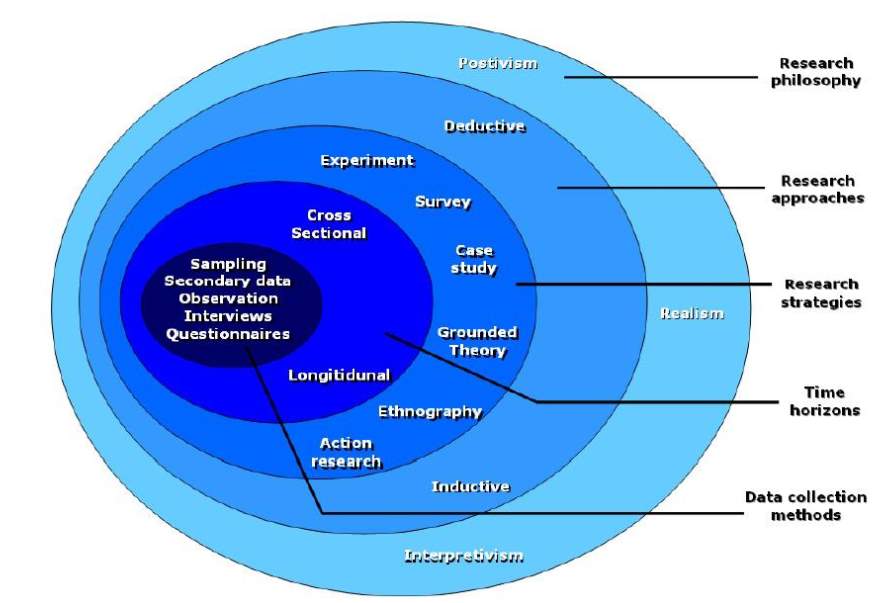
Figure 4: ‘The research onion’ (Saunders and al. 2016)
Research philosophy
Research Philosophy is constituted of three assumptions; ontology, epistemology and axiology (Saunders and al. 2016). Research philosophies are multiple and different, which means: positivism, critical realism, pragmatism, postmodernism and interpretation (Saunders, Lewis et Thornhill 2016) ; the author have the choice here.
Positivism is regularly used when there is an adoption of a quantitative research method. It is a method of scientific research that uses measurable and observable facts. A close objective vision throughout the researcher (Saunders, Lewis and Thornhill 2016: 136). The study is generally associated with the results (Saunders, Lewis and Thornhill 2016: 136).
Another possibility of philosophy that the author could adopt would be Pragmatism. Pragmatism is often linked to a blended research approach that emphasizes practical solutions and results. This research philosophy focuses on the beginnings of research and its problem and then finds appropriate solutions to help companies in the future (Saunders, Lewis and Thornhill 2016: 137).
The author has adopted a philosophy of interpretation that will enable him to establish in depth the subjective and socially constructed meanings of the concept of ethnic marketing and consumer behavior (Saunders, Lewis and Thornhill 2016). Naturally, a philosophy of interpretation is linked to thorough research and qualitative research methods that will work perfectly with the author’s choice of a case study method.
Research approach
A research strategy is defined by Saunders and al (2012:173) as “a plan of how a researcher will go about answering her or his research question”. The research project aims to examine the role of Consumer Behaviour, through their membership of ethnic minorities in the United States; in their social environment and their impact on the market of the cosmetics industry as a new market segment. To this end, the researcher will take an inductive approach. This process involves developing a theory based on the data collected and analysed. Fisher (2007) defines this process as drowning a general conclusion from detailed findings which in this case will be aimed at answering the following research questions:
- Why Cosmetics Brands target ethnic groups as an attractive market?
- Are ethnic groups’ big customers in cosmetics industry in US?
- How cultural awareness should drives customer’s behaviour choices?
- What do the Cosmetics Brands do to capt attention to their ethnic products?
- What are the effect of ethnic minorities on their purchasing behavior?
- What is ethnic marketing?
- What is the Customer behavior?
- How the behavior of ethnic minority consumers influences the cosmetics industry in the United States?
In the inductive approach the researcher identifies constraints driving from the literature where existing theories are applied to provide theoretical developments and address new insights (Easterby-Smith et al. 2012).
Research strategy
A case study can be used “to contribute to our knowledge of individual, group, organisational, social, political and related phenomena” (Yin. 2003:1). It enables researchers to retain the “meaningful characteristics of real-life events such as…organisational and managerial processes…and the maturation of industries” (Yin. 2003:2). The author will use a case study research design alongside using archival and documentary research to support the case study strategy. Case studies also have the advantage of being able “to deal with a full variety of evidence” (Yin. 2003:8) allowing for in depth descriptions to be established which can lead to the development of theories (Saunders, Lewis and Thornhill. 2016).
Sample
“For all research questions where it would be impracticable for you to collect data from the entire population, you need to select a sample” (Saunders, Lewis and Thornhill. 2016:274). “For all research questions where it would be impracticable for you to collect data from the entire population, you need to select a sample” (Saunders, Lewis and Thornhill. 2016:274).
The author will be using secondary data from online sources to develop a case study for L’Oréal. This is the best way to source information as it is far more reliable than primary data and will allow the author to use a much larger range of information. Data will only be selected if it has been published within the last 15 years and is from a trusted source. Furthermore the data is readily available in the public domain therefore meaning it is easily accessible and less likely to invite ethical issues which the author will go on to discuss next.
Ethics
Throughout this thesis, the research approach does not need to be adapted to the Data Protection Act (1998); indeed, the researcher was careful to use only secondary research data. In addition, the researcher joined the Coventry University Ethical Research and obtained the Certificate of Ethical Approval (Appendix 1)
3.7. Research design
The purpose of the literature review is to allow the author to examine all previous research that has been undertaken in the thematic area chosen, in order to know all the emerging trends. This chapter will provide the basis for answering the central research question (Easterby-Smith and al. 2002). Saunders and al. (2007:119) defined literature review as important with “a range of research to address data constraints”. Saunders and al. (2007) give a description of the type of research approach undertaken in this project as inductive. For more information on research, the author with a systematic review, synthesized research and conclusions drawn from what is known, will make sure to review the credible and relevant sources in the chosen field of study (Saunders, Lewis and Thornhill 2016). This is the result of an in-depth research of the customer behavior through the influence of ethnic minorities in the cosmetics industry. The author will examine how and when the concepts of ethno-marketing and ethno-cosmetics have been developed and also how Globalization of the culture combine with customer behavior and generate new trend in cosmetics industry, with this new target market, how the concept of ethnic marketing is used by cosmetics brand.
Data collection
3.8.1. Data analysis
There are two different kinds of data that can be collected during the search. These are called quantitative and qualitative data. Quantitative data can be defined as “numerical data or quantified data” (Saunders, Lewis and Thornhill. 2016: 724). They will measure the relationship between a numbers of variables and ensure that the data are collected in a controlled manner in order to allow the reproduction of the research. The quantitative data will be used in this article in the form of numerical data extracted from online qualitative sources and case study materials.
Qualitative data can be described as “non-numerical data or data that have not been quantified” (Saunders, Lewis and Thornhill. 2016: 723).
There are used to examine the meaning and relationships between studies and uses analytical procedures in order to develop a contribution to the existing theory (Saunders, Lewis and Thornhill. 2016). The author will use a single data collection technique known as a mono method qualitative study.
It can be done in the form of observations, interviews and questionnaires; that can be extremely useful sources of information. The author chose not to use the primary data for this research project because only secondary data is accepted; and the secondary data adequately responds to the needs of the project. In addition, due to time constraints and lack of finances, primary data would not be possible. Secondary data can be defined as “data originally collected for other purposes” (Saunders, Lewis and Thornhill. 2016: 727). Secondary data can be analysed in more detail to provide an alternative understanding of existing data. The author will use secondary data for this document because it is a discrete data collection method and gives a broader view of the industry to be explored, allowing for more detail throughout of each case study.
Data collection
There are many kinds of analysis that the author could use to develop the findings of the case study.The thematic Analysis will focus on the search for “themes or patterns that occur through a Data Set” (Saunders, Lewis and Thornhill 2016: 579), which will analyze a large and small set of data. The main purpose of this method of analysis is to identify the key themes that will allow the author to explore them in depth (Saunders, Lewis and Thornhill. 2016). This is an autonomous analysis that is completely different from the ‘Grounded Theory’ technique, which is seen as a less flexible method since it belongs to a broader methodology. This technique was not adopted by the author because it does not correspond to the time scale availability for this project. Nevertheless, the practice of a Narrative Thematic analysis would be more beneficial for this thesis; Since it would highlight the themes by focusing on the narrative content, not only on the narrative as the thematic analysis does. “The emphasis is on ‘what’ the narrative is about rather than ‘how’ it is constructed” (Saunders, Lewis and Thornhill. 2016:601). The author could also look at a Structural Narrative Analysis approach, but this focuses on the structure of the data again rather than the displayed data, so the method was rejected.
Summary
According to the methodology indicated above, the way used by the author to analyze and collect data in this project is explicit. For this research project, the analysis of the data will take into account all ethnic concerns. The data can now be collected, constructed in a case study and analyzed and then developed a conclusion.
4.0. Data & Analysis
4.1. Review of Ethnic Minority Consumer Behaviour Research
It is not surprising that the majority of ethnic minority consumer behaviour studies have been conducted in the US. Cui’s (2001) study provides an overview of 222 ethnic consumer behaviour studies conducted in the United States between 1932 and 1997.
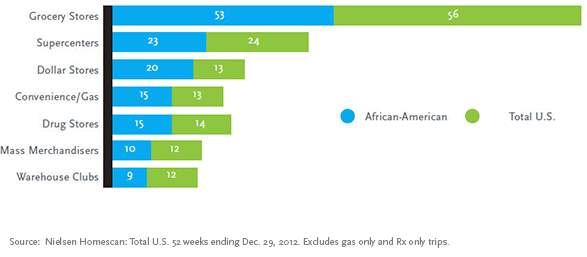
Figure 5: African-American consumption [online] available from http://www.nielsen.com/us/en/insights/news/2013/african-american-consumers-are-more-relevant-than-ever.html (30 june 2017)
4.2. Market Size and Main Product Trends – United States
As the U.S. economy has grown strongly in the last few years, U.S. consumers have been resilient to high energy prices and interest rates, and continued to spend at a healthy rate on consumer goods, including cosmetics and toiletries. However, the cosmetics market has grown by 2.3% in U.S. dollar terms over the 2000-06 period, less than the average growth in U.S. consumers’ expenditure of 5.5%. The cosmetics segment covers cosmetics that primarily serve as cosmetics as opposed to products applied to the skin for cleaning and care. Cosmetics include make-up, nail polish and self-tanning products. Although they are previously weak, in recent years, cosmetics have grown, due to an increased need for personal expression and individuality. The major producers in this market are L’Oréal, Unilever, Procter & Gamble and Beiersdorf. Cosmetics sales amounted to US $ 8,124 million in 2017. The market is expected to increase by 4.2% annually (CAGR 2017-2021). From an international perspective, it is shown that most of the revenue is generated in the United States (US $ 8,124 million in 2017). In terms of total population figures, US $ 24.91 per capita income is generated in 2017, (figure 6) (statista.com).

Figure 6: Growth of cosmetics in US 2010-2017 [online] available from
Revenue in the “Skin Care” segment amounts to US$14,381m in 2017. The market is expected to grow annually by -0.3 % (CAGR 2017-2021). From an international perspective it is shown that most revenue is generated in the United States (US$14,381m in 2017). In relation to total population figures, per person revenues of US$44.10 are generated in 2017. Revenue in the “Hair Care” segment amounts to US$12,368m in 2017. The market is expected to grow annually by 1.3 % (CAGR 2017-2021). From an international perspective it is shown that most revenue is generated in the United States (US$12,368m in 2017). In relation to total population figures, per person revenues of US$37.93 are generated in 2017(statista.com).
4.3. L’Oréal: A success story
L’Oréal has very well understood these worldwide changes. Since they ignored the characteristics of ethnic-products, L’Oréal bought the US firm Soft Sheen-Carson to acquire their African cosmetics know-how. The “ethnic” subsidiary of L’Oréal believes that their potential customers spend three times more, excluding hair products, than white clients. As we already said earlier, it is also estimated that a “black” woman uses more products that a white woman under the same conditions (figure 5).16 L’Oréal Paris opted for the multicultural approach with HIP, a line of high-pigment makeup fronted by Beyoncé Knowles. With all these actions from this company, we can say that L’Oréal quickly got the huge marketing opportunities for their businesses. L’Oréal is not the only one taking care of ethnic communities. Procter & Gamble is also one of these pioneers and according to the company, ethnic cosmetics represents a $1.5 billion market, with mass retail accounting for roughly 50 percent cosmetics has emerged as a robust business in its own right.17 Although the turnover of companies specializing in cosmetic products for non-whites remains still small (about $200 million), the ongoing demographic evolution hints at a huge potential for growth. An estimated one billion people around the world have African origins. Through the many interbreeding, “80% of the world population has some degree of ethnicity “(C. Matthews, President of Soft-Sheen-Carson). The brand has also launched INNOXA, an “ethnic chic” makeup range in 2003, whose axis of communication is rooted in the values of the trip “Turquoise Indian, exotic ocher, with the new collection … Ethno Chic, the ethnic beauty becomes a journey. Between distant lands and ancient rituals, makeup explores new territory.”
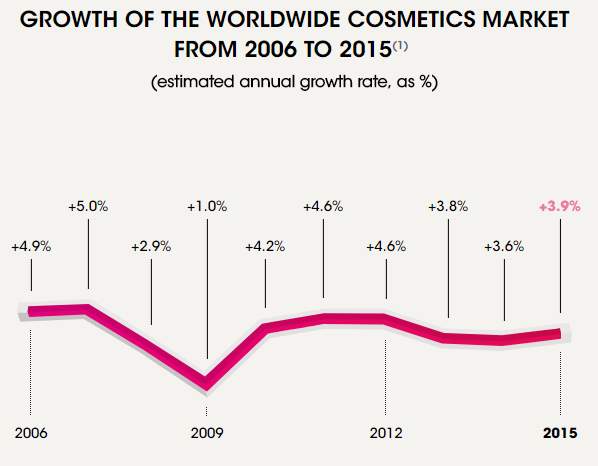
Figure 7: growth of the worldwide cosmetics market from 2006 to 2015- [online] available from
Conclusion, limitations and recommendations
5.1. Conclusion
Minorities in Marketing: The Ethno- marketing’s concept
According to Jamal (2003), ethnic origin represents genetics obtained from generation to generation and will impact on identification. As listed in the areas of anthropology and sociology, ethnicity is used to place people in different categories according to their differences in nature or disposition (Laroche et al., 1991). Ethnic groups are distinguished by their unique identity (Hirschman, 1981). People who share the same culture are supposed to be in the same ethnic group; while those with a different culture are different members of different ethnic groups (Mokhlis, 2009). Minority ethnic groups are members of ethnic minorities, ie individuals who share an ethnic origin distinct from that of the dominant population. (Pires and Stanton, 2002).
5.2. Recommendation
Based on the conclusions set out above, this research makes the following recommendations: Recommendations to companies in the cosmetics industry. First of all, the author of this project, consider that all cosmetic companies can benefit from the use of ethnic marketing within their organization and law, and will consider ethnic minorities and ethnic marketing strategies as a Tool to improve their performance, if it is not already established. In addition, it is envisaged to integrate the notion of ethnic cosmetics and the influence of minorities in the behaviours of consumers; and this within the corporate culture. This can be beneficial in that it gives all employees the knowledge and understanding of how their ideas can contribute to development. Companies are developing training programs on innovations in this new market segment in terms of products, brands and communication; Also training to develop new strategies positioned on this new growth market segment, which does not already make cosmetic brands ready to expand their client portfolio and create new ethnic products lines to generate more profits. Innovation, is the way for cosmetics brands to develop digital means of communication and technologies that can be made available to customers: such as L’Oréal and its virtual app used by customers for testing cosmetic products such as make-up, thanks to a system that lists all the products according to the skin eye. The development of training programs, will be determine according to the level skills and the roles of each employee at work; and will ensure that each employee has the appropriate base and sufficient quality of training.
References
Andreasen, A., 1975. The Disadvantaged Consumer. s.l.:Free Pr.
Bouchet, D. (1995), “Marketing and the redefinition of ethnicity”, in Costa, J.A. and Bamossy, G.J. (Eds), Marketing in a Multicultural World, Ethnicity, Nationalism, and Cultural Identity, Sage Publications, Thousand Oaks, CA, pp. 68-104.
Brown, R. B. and Brown, R. (2006) Doing Your Dissertation in Business and Management the Reality of Researching and Writing. London; London ; Thousand Oaks, CA: London : SAGE Publications
Castel, S. Kalantzis, M. Cope, B. and Morissey,M., 1992. Mistaken Identity: Multiculturalism and the Demise of Nationalism in Australia. Sydney: Pluto Press.
Cornwell, T.B. and Drennan, J. (2004), “Cross-cultural consumer/consumption research: dealing with issues emerging from globalization and fragmentation”, Journal of Macromarketing, Vol. 24 No. 2, pp. 108-21.
Costa, J.A. and Bamossy, G.J. (1995), Marketing in a Multicultural World: Ethnicity, Nationalism and Cultural Identity, Sage Publications, London
Cui, Geng (1997), “Marketing Strategies in a Multi-Ethnic Environment”, Journal of Marketing Theory and Practise, Winter, 122-134.
Cui, Geng, (2001), “Marketing to Ethnic Minority Consumers: A Historical Journey (1932- 1997)”, Journal of Marketing, 21 (June), 23–31.
Cornell, S. and Hartmann, D. 1998. Ethnicity and Race. London: Sage Publications.
Easterby-Smith, M. T. R. a. L. A., 2002. Management Research: An Introduction. 2nd Edition. London: Sage Publications.
Howard, J.A. (2000), “Social psychology of identities”, Annual Review of Sociology, Vol. 26 No. 1, pp. 367-393
Hutchinson, J. Smith, A., 1996. Ethnicity. Oxford: Oxford University Press.
Jamal, A. (2003), Marketing in a multicultural world: The interplay of marketing, ethnicity and consumption. European Journal of Marketing, 37(11), 1599-1620.
Kamakura, W.A. and Novak, T.P. (1992), “Value-system segmentation: a model for the measurement of values and value systems”, Journal of Consumer Research, Vol. 19 No. 1, pp. 119-32
Laroche, M., Joy, A., Hui, M., Kim, C. (1991), An examination of ethnicity measures: Convergent validity and cross-cultural equivalence. Advances in Consumer Research, 18, 150-157
McCracken, G., 1986. “Culture and consumption: a theoretical account of the structure and movement of the cultural meaning of consumer goods”, Journal of Consumer Research. s.l.:s.n.
McCracken, G. (1986), “Culture and consumption: a theoretical account of the structure and movement of the cultural meaning of consumer goods”, Journal of Consumer Research, Vol. 13 No. 1, pp. 71-84
Mokhlis, S. (2009), Malaysian Chinese consumers: Their ethnic attitudes and shopping orientations. International Journal of Business and Management, 4(11), 53-62
Nwanko et al., 1998, Ethnic Marketing: Accepting the Challenge of Cultural Diversity p.44
Peñaloza, L.N. and Gilly, M.C. (1999), “Marketer acculturation: the changer and the changed”, Journal of Marketing, Vol. 63 No. 3, pp. 84-104.
Rajasekar, S., Philominathan, P.and Chinnathambi, V., 2013. Research Methodology.
Saunders, M., Lewis, P., Thornhill, A., 2016 Research methods for business students. 7th edition. Harlow: Pearson
Schwartz, S. and Bilsky, W. (1987), “Toward a universal psychological structure of human values”, Journal of Personality and Social Psychology, Vol. 53 No. 3, pp. 550-62.
Seelye, H., Wasilewski, J., 1996. Between Cultures: Developing Self-Identity in a World of Diversity. Illinois: NTC Publishing Group Chicago.
Segal, M., Giacobbe, R., 1995.`An Empirical Investigation of Ethical Issues in Marketing Research: Asian Perspectives’, in Joel R. Evans, Barry Berman and Benny Barak (eds.), Proceedings, 1995 Research Conference on Ethics and Social Responsibility in Marketing. Hofstra University, pp. 110-116..
Senges.A. 2010, Management & Avenir, 2010/2 (n° 32). Management Prospective Ed.318 pages.
Silverman G (2001) Secrets of Word-of-Mouth Marketing: How to Trigger Exponential Sales through Runaway Word of Mouth, 2 nd Edition, New York, AMA Publications, p. 10, 24, 34
Sussman, N.M. (2000), “The dynamic nature of cultural identity throughout cultural transitions: why home is not so sweet”, Personality and Social Psychology Review, Vol. 4 No. 4, pp. 355-373.
Pires, G.,D, Stanton, J., 2002. Ethnic marketing ethics Journal of Business Ethics.; Mar 2002; 36, 1/2; ProQuest pg. 111
Saunders, M., Lewis, P., Thornhill, A., 2016 Research methods for business students. 7th edition. Harlow: Pearson
Schwartz, S. and Bilsky, W. (1987), “Toward a universal psychological structure of human values”, Journal of Personality and Social Psychology, Vol. 53 No. 3, pp. 550-62.
Seelye, H., Wasilewski, J., 1996. Between Cultures: Developing Self-Identity in a World of Diversity. Illinois: NTC Publishing Group Chicago.
Segal, M., Giacobbe, R., 1995.`An Empirical Investigation of Ethical Issues in Marketing Research: Asian Perspectives’, in Joel R. Evans, Barry Berman and Benny Barak (eds.), Proceedings, 1995 Research Conference on Ethics and Social Responsibility in Marketing. Hofstra University, pp. 110-116.
Senges.A. 2010, Management & Avenir, 2010/2 (n° 32). Management Prospective Ed.318 pages.
Sussman, N.M. (2000), “The dynamic nature of cultural identity throughout cultural transitions: why home is not so sweet”, Personality and Social Psychology Review, Vol. 4 No. 4, pp. 355-373.
Pires, G.,D, Stanton, J., 2002. Ethnic marketing ethics Journal of Business Ethics.; Mar 2002; 36, 1/2; ProQuest pg. 111
Table of figures
Figure 1 Ethnicity-defining characteristics
Figure 2: Conceptual framework for the study- (source: http://search.proquest.com/docview/1449409538/fulltextPDF/672F10BD2D1E4899PQ/3?accountid=10286)
Figure 3: conceptual framework of strategic innovation in the cosmetics industry- (source: http://search.proquest.com/docview/1678764775/fulltextPDF/1D253B38CEB4E5BPQ/1?accountid=10286)
Figure 4: ‘The research onion’ (Saunders and al. 2016)
Figure 5: growth of the worldwide cosmetics market from 2006 to 2015- [online] available from
Appendices
Appendix 1: All L’Oréal brands, [online] available from http://www.loreal-finance.com/en/annual-report-2016/brands-overview> (30 june2017)
Appendix 2: the American diversity map, [online] available from http://www.nielsen.com/content/dam/corporate/us/en/reports-downloads/2015-reports/the-multicultural-edge-rising-super-consumers-march-2015.pdf> (30 June 2017)
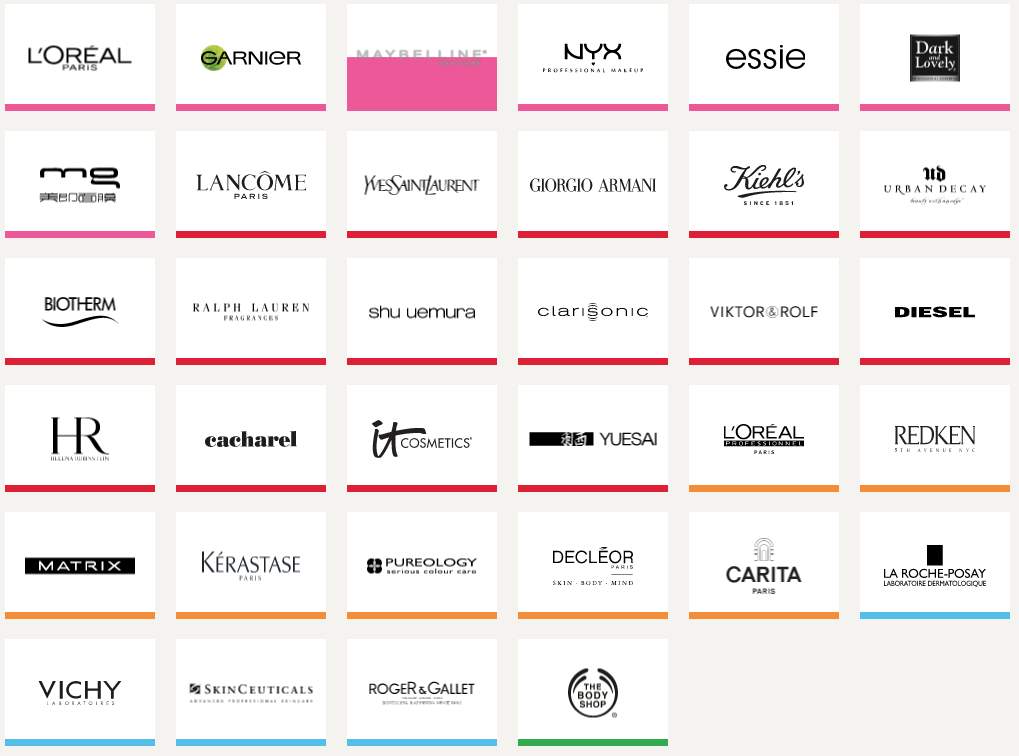
Appendix 1: All L’Oréal brands
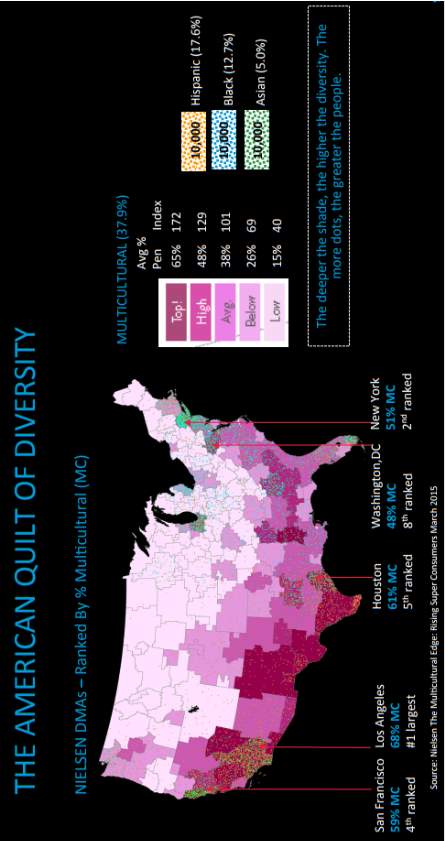
Appendix 2: the American diversity map
Cite This Work
To export a reference to this article please select a referencing stye below:
Related Services
View allRelated Content
All TagsContent relating to: "Consumer Decisions"
The consumer decision making process involves how consumers identify their needs and gather and process information prior to a purchase. Consumer decisions involve how the emotions and preferences of consumers can impact their buying decisions.
Related Articles
DMCA / Removal Request
If you are the original writer of this dissertation and no longer wish to have your work published on the UKDiss.com website then please:




